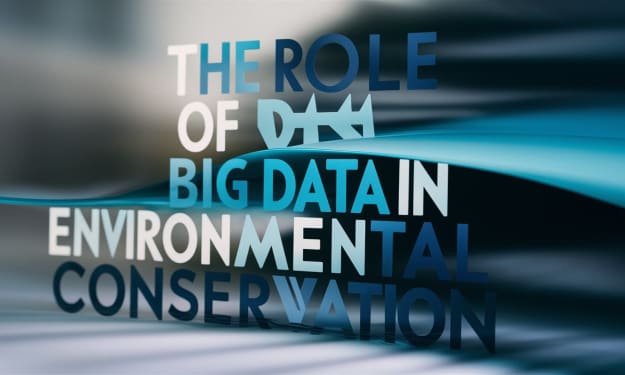Miami's New District Map: Transforming Representation for a Diverse City
A Comprehensive Guide to the Redistricting Process, Changes, and Impact
Miami's New District Map: Reshaping the Political Landscape
In recent months, the city of Miami has embarked on a significant endeavor – the creation of a new district map that promises to reshape its political landscape. This article delves into the details of this ambitious project, exploring the rationale behind it, the process of redistricting, key changes in the map, and its potential impact on representation and community dynamics. Join us on this insightful journey as we unravel the intricacies of Miami's new district map.
1. Introduction
As cities evolve and populations grow, it becomes essential to periodically review and update district maps to ensure fair and equitable representation. Miami, a vibrant metropolis known for its diverse communities and rich cultural heritage, is no exception. With shifting demographics and changing political dynamics, the need for a new district map became evident.
2. Background of Miami's New District Map
The new district map is a result of an extensive analysis of population data, voter patterns, and community input. It aims to realign district boundaries in a way that reflects the changing demographics of Miami and promotes more inclusive and effective representation.
3. Purpose of the New District Map
The primary objective of the new district map is to ensure that each district represents a relatively equal number of residents, adhering to the principle of "one person, one vote." Additionally, it seeks to address historical inequalities and create districts that better reflect the unique characteristics and needs of the communities they encompass.
4. Redistricting Process
Criteria for Redistricting
The redistricting process involves various criteria to guide the creation of the new district map. Factors such as population equality, compactness, contiguity, and respect for communities of interest play crucial roles in determining the district boundaries.
Public Input and Feedback
Recognizing the importance of community participation, the city of Miami actively sought public input and feedback throughout the redistricting process. Town hall meetings, public forums, and online surveys provided residents with opportunities to express their concerns, aspirations, and ideas for the new district map.
Challenges and Considerations
Redistricting is a complex task that presents its fair share of challenges. Balancing the need for equal population representation with preserving community cohesion, respecting natural and political boundaries, and complying with legal requirements are among the key considerations faced by the mapmakers.
5. Key Changes in the New District Map
The new district map introduces several significant changes that have the potential to redefine Miami's political landscape. Let's explore some of the most notable alterations:
District Boundaries
The redrawing of district boundaries has resulted in a more balanced distribution of population across districts. It aims to eliminate gerrymandering and ensure that communities with similar interests and needs are grouped together within the same district.
Demographic Shifts
As Miami continues to evolve, demographic shifts have played a crucial role in shaping the new district map. The inclusion of growing neighborhoods, the emergence of new cultural hubs, and the changing racial and ethnic composition of certain areas have all influenced the redistricting process.
Political Implications
The new district map has the potential to bring about significant political implications. It may create opportunities for new candidates, alter the power dynamics within existing districts, and influence the outcomes of future elections. The impact of these changes will be closely observed in the upcoming political cycles.
6. Impact on Representation
The new district map holds the promise of enhancing representation in various ways. Let's explore some of the key aspects:
Fairness and Equity
By ensuring equal population distribution, the new district map aims to foster fairness and equity in the electoral process. It strives to minimize the possibility of certain communities being underrepresented or overrepresented.
Community Representation
The redistricting process provides an opportunity to strengthen community representation. By aligning district boundaries with natural and cultural boundaries, it seeks to empower communities to elect representatives who understand and advocate for their unique interests and challenges.
Voting Power
The realignment of district boundaries can have a significant impact on voting power. Certain areas that were previously split between multiple districts may now have more consolidated influence, potentially leading to a stronger voice in local decision-making processes.
7. Community Reactions and Concerns
The introduction of a new district map inevitably triggers a range of reactions and concerns within the community. It is crucial to understand the diverse perspectives and address potential issues that may arise. Let's explore some of the key aspects:
Stakeholder Perspectives
Different stakeholders, including community leaders, advocacy groups, and political organizations, may have varying opinions about the new district map. It is essential to engage in meaningful dialogue and consider multiple perspectives to ensure an inclusive and transparent redistricting process.
Legal and Ethical Issues
Redistricting processes are not without their legal and ethical implications. Ensuring compliance with federal and state laws, avoiding partisan bias, and upholding principles of fairness and transparency are essential to maintain public trust and confidence in the new district map.
8. Implementation and Timeline
The rollout of the new district map requires careful planning and coordination. Here's a glimpse of what lies ahead:
Rollout of the New District Map
Once finalized, the new district map will be officially implemented, and residents will be informed about their assigned districts. This phase includes updating voter registration information, educating the public about the changes, and ensuring a smooth transition.
Transition and Adjustment Period
Transitions can be challenging, especially when it comes to changes in representation. A transitional period will allow elected officials and constituents to familiarize themselves with the new district boundaries, establish new connections, and adapt to the altered political landscape.
Future Updates and Revisions
As Miami continues to evolve, future updates and revisions of the district map may become necessary. Ongoing community engagement, periodic review of demographic data, and responsiveness to emerging needs will be essential in ensuring that the district map remains reflective of the evolving dynamics of the city.
9. Conclusion
Miami's new district map represents a bold step towards fostering fair and equitable representation. By addressing demographic shifts, promoting community cohesion, and adhering to legal requirements, the mapmakers aim to create districts that better serve the needs and interests of Miami's diverse communities. As the city moves forward with the implementation of the new district map, it is crucial to embrace inclusivity, transparency, and ongoing community engagement to ensure a robust and representative political system.
10. FAQs
Q: How will the new district map affect future elections?
A: The new district map has the potential to alter power dynamics and influence election outcomes. It may create opportunities for new candidates and impact
About the Creator
Stateside Chronicles
"Discover the essence of America at AmeriStory Hub. Uncover captivating tales, diverse cultures, and the heartbeat of the U.S. in every post. Join our journey through the Stateside Chronicles. 🇺🇸✨ #AmeriStoryHub






Comments
There are no comments for this story
Be the first to respond and start the conversation.